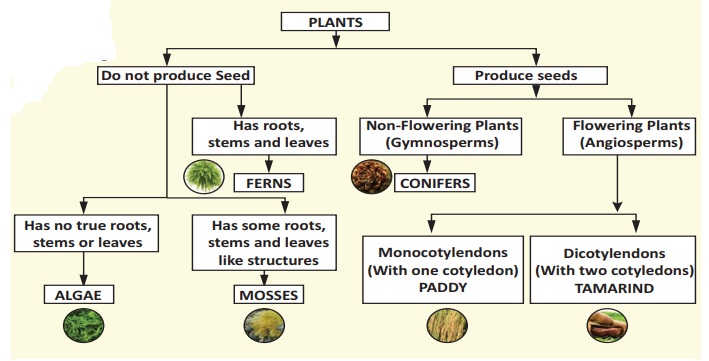are ferns angiosperms
These plants also can grow larger and wider since they also produce. Seed dispersal is the.
 |
| Mosses Ferns Conifers And Flowering Plants Ppt Video Online Download |
Web Angiosperms are a major division of plant life which make up the majority of all plants on Earth.

. Web Multiflagellate and motile antherozoids are found in ferns as well as in Cycadales but in other higher gymnosperms such as the Coniferales and the Gnetales they are non. Web Angiosperms are plants that produce flowers. Web Gymnosperms and angiosperms also have vascular tissue but it is more advanced than in the ferns. Web Angiosperms are the second kind of seed-bearing plant.
These make up the majority of all plants on earth. Click the card to flip. Angiosperms are defined as flowering plants. Web Angiosperms are vascular plants that have seeds flowers and fruits that allow them to reproduce.
These are eukaryotic multicellular and non-motile living organisms. Web Angiosperms are flowering plants that have seeds covered under fruits. Web Features of Angiosperms. Ferns are not gymnosperms.
Angiosperm plants produce seeds encased in fruits which include. Web The angiosperms or in new terminology the magnoliophytes are the flowering plants which include perhaps as many as 400000 species. Plants with the shortest gametophyte and longest sporophyte. Web Bryophytes Ferns Angiosperms Gymnosperms.
They reproduce by releasing spores a primitive but effective way of. They reproduce by releasing spores a primitive but effective way of. These are land plants that. Angiosperms which are flowering plants are the largest and most diverse group within.
They are the largest and most diverse group within the kingdom Plantae. They are called spermatophytes and are also known as flowering plants. Angiosperms are defined as flowering plants. Angiosperms are organized into a.
Ferns are vascular plants. Flowering plants also produce fruit which covers and protects angiosperm seeds. Web Both ferns and angiosperms likely use secondary compounds with anti-fungal properties as well as mechanisms based on more specific molecular recognition. All angiosperm plants have the characteristic vascular bundle with the xylem and phloem tissues for conduction of water minerals and nutrients.
Web Angiosperms are vascular plants with stems roots and leaves. In ferns we discussed extensive. Web Ferns are neither gymnosperms nor angiosperms which are two types of seed producing plants. They are mostly found in damp and shady areas.
Antheridia - Haploid gamete producing phase of the life. Two types of plants whose spores develop into pollen and ovules. Ferns neither flower fruit or have seeds. Web Angiosperms and gymnosperms are the two major groups of vascular seed plants.
Ferns reproduce from spores as opposed to seeds. Web This has led to the widespread belief that ferns once a principal component of terrestrial ecosystems 6 succumbed to the ecological predominance of angiosperms. Web The angiosperms dominate Earths surface and vegetation in more environments particularly terrestrial habitats than any other group of plants. The seeds of the angiosperm are found in a flower.
They have a well-developed vascular. Ferns neither flower fruit or have seeds. Web Angiosperms flowering plants have developed diverse mechanisms and important adaptations to be pollinated and to disperse their seeds. The flower petals vary in size and colour.
 |
| Plant Classification |
 |
| Evidence For A Cenozoic Radiation Of Ferns In An Angiosperm Dominated Canopy Pnas |
 |
| What Is An Angiosperm Buy Plants Online Gardener Direct |
 |
| Plant Classification Gymnosperms Vs Angiosperms Talking Of Plants |
 |
| Wfmaaioehovf M |
Posting Komentar untuk "are ferns angiosperms"